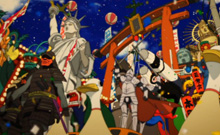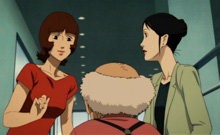Traditional animation can be broken down into several categories, but is generally known as cel animation or hand-drawn animation. It involves the use of photographed hand-drawn images transferred onto transparent acetate sheets called cels, which are then painted on the opposite side of the line drawings. The hand-drawn images consist of a series of slightly differing changes to give the illusion of movement. The sheets consist of many layers stacked together to give a sense of depth in the background environment. This process of animating high-quality frames of detailed hand-drawn images is known as Full animation. The most widely known example would be the works of Walt Disney studio. Today, the same method of traditional animation is used with the help of the computer, where images are drawn directly onto the computer using devices like tablets.
The idea of using layers to convey spatial depth is one method of manipulating reality. By having control over what to put in each layer of the scene, the artist is able to present a view of what he/she wants the viewer to see, whether it is a realistic version of the real world, or a completely imagined dream of the artist.
The animation techniques used in Paprika (2006) are part of the popular Japanese anime style, all of which use the technique of Limited animation. Limited animation is primarily for producing cost-effective animations in which frames are not completely redrawn, but are recycled and only portions of the frame are modified to suit whatever is needed to be in motion.











